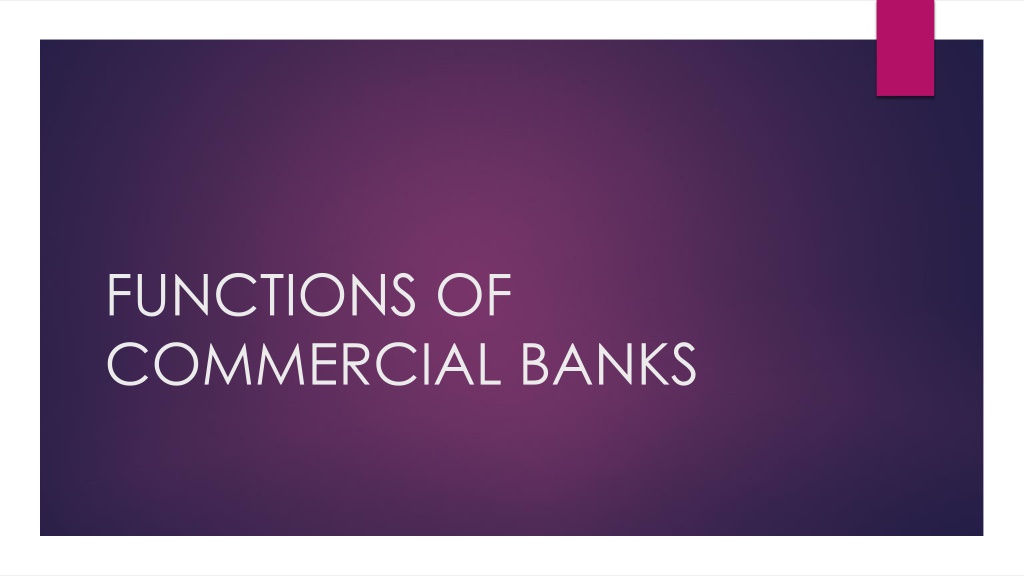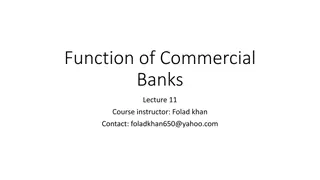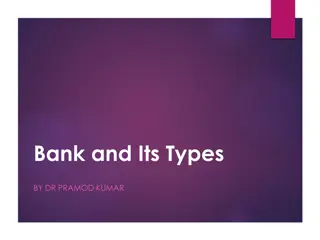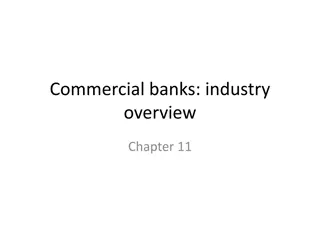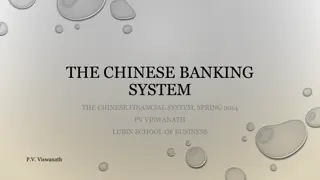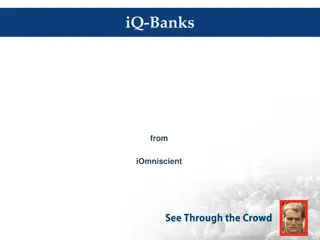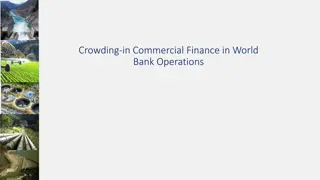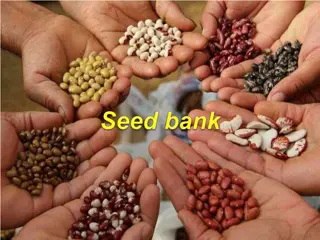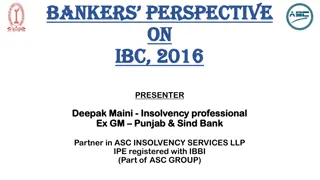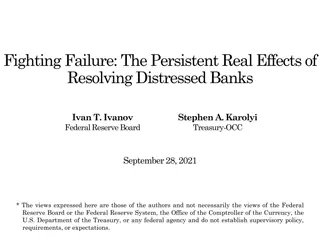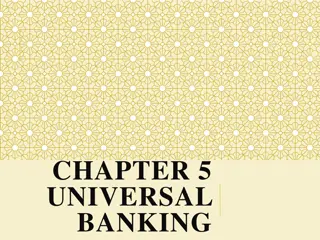Functions of Commercial Banks and Their Evolution
Commercial banks play crucial roles in the economy by mobilizing savings, extending banking services to rural areas, providing loans to weaker sections of society, and participating in the capital market. They have also modernized their functions through services like ATM and debit cards, credit cards, mail and telegraphic transfers, and tele-banking, enhancing convenience for customers.
Download Presentation

Please find below an Image/Link to download the presentation.
The content on the website is provided AS IS for your information and personal use only. It may not be sold, licensed, or shared on other websites without obtaining consent from the author. Download presentation by click this link. If you encounter any issues during the download, it is possible that the publisher has removed the file from their server.
E N D
Presentation Transcript
FUNCTIONS OF COMMERCIAL BANKS
III. Developmental Functions Mobilisation of Savings: Banks collect idle saving of the people and invest the same in productive activities. Banks help in accelerating the rate of capital formation in country by mobilising the saving. The most important role in mobilising of the savings of the society is played by the commercial bank. 1. Extension of Banking Services in Rural Area: Commercial banks have opened their branches in rural areas and small towns to provide banking facilities to the people living therein. Banks also give loans at low rate of interest to finance programme meant for rural development and removal of unemployment. 2.
3. Providing Loans to Weaker Section: Banks give loans to weaker sections of the society at low rate of interest. Small artisans, landless agricultural labourers and poor classes get cheap loans from the banks. 4. Assistance to Capital Market: Banks also take part in capital market by giving long term loans to industry, agriculture, small scale industry, trader, transporters etc.
IV. Modern Functions Automatic Teller Machines (ATM) Cum Debit Cards: Automatic Teller Machines have revolutionised the banking activities in the country in the last few years. Many bankers have introduced ATMs to assist their customers to withdraw and deposit cash without any waiting time. 1. Credit Cards: Many bankers have introduced credit cards in India among their customers. Credit card is a plastic money which acts as an instrument of credit. Credit card replaces the paper currency. The credit cardholders need not carry cash in their pockets. The cardholder may using the credit card at nominal rate of purchase goods from many authorised dealers by interest 2.
3. Mail Transfer and Telegraphic Transfe: r The customer of a bank has an option to transfer from one place to another through Mail Transfer or Telegraphic Transfer. In Mail/Telegraphic Transfer techniques the customer requests the bank to transfer some part of the balance in the payee's account kept in a different place in the same bank for a nominal commission. 4. Tele-Banking: Tele-banking is increasingly used as a delivery channel for marketing banking services. A customer can do entire non-cash related banking over the phone anywhere and at anytime. Automatic Voice Recorders (AVR) or ID numbers are used for rendering tele- banking services which have added convenience to customers.
